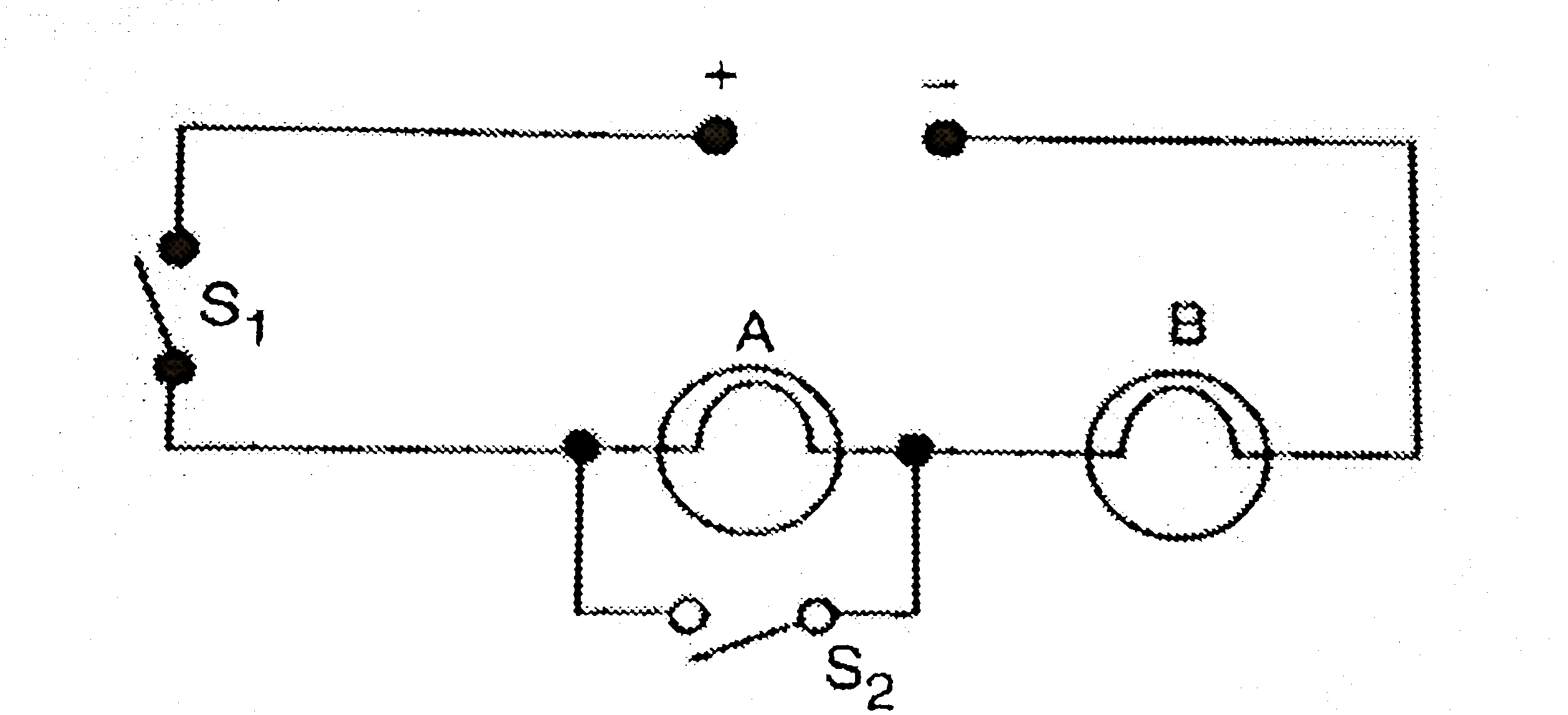Which of the following is correct? s∈10>s∈1 (b) s∈10<s∈1 (c) s∈10=s∈1 (d) s∈10 =π180s∈1
We know that1c=180oπ=57.3o
1o<57.3o
sin1o<sin57.3o
∴sin(1o)<sin(1c)
Topper's Solved these Questions
Similar Questions
Consider the points O(0,0),A(0,1) , and B(1,1) in the x,y plane. Suppose that points C(x,1) and D(1,y) are chosen such that 0<x<1 and such that O,C and D are collinear. Let the sum of the area of triangles OAC and BCD be denoted by S . Then which of the following is/are correct? Minimum value of S is irrational lying in (13,12). Minimum value of S is irrational in (23,1) The value of x for the minimum value of S lies in (23,1). The value of x for the minimum value of S lies in (13,12).
View SolutionUsing the circuit given below, state which of the following statemet is correct?

(a) When S1 and S2 are closed, lamps A and B are lit.
(b) With S1 open and S2 closed, A is lit and B is not lit.
(c) With S2 open and S1 closed A and B are lit.
(d) With S1 closed and S2 open, lamp A remains lit even if lamp B gets fused.
View Solution
Knowledge Check
Considering the genetic basis of self incompatibility which of the following is correct. Male plant is S1S3 and female plant is S1S2
A B
B C
C D
D
For SN1 mechanism which of the following is correct ?
AInversion (100 %)BFormation of carbocationCNon-polar solventDEliminationIf rate constant k for a hypothetical reaction A→B is 0.75s−1 Which of the following statements (s) is (are) correct if [A]0 is the initial concentration?
At1/2=[A]02×0.75Bt1/2=0.6930.75Ct1/2=32(0.75)[A]20DNone of these
Which of the following equation shows the correct relationship between electrical units?
1A=1C/s or 1C=1A/s
View SolutionLet S(k)=1+3+5+...+(2k−1)=3+k2. Then which of the following is true ?
(A) S(1) is correct
(B) S(k)=S(k+1)
(C) S(k)≠S(k+1)
(D) Principal of mathematical induction can be used to prove the formula
View SolutionWhich of the following statement is not correct for the element having electronic configuration 1s2,2s2,2p6,3s1
View SolutionGiven a+b+c+d=0. Which of the following statements(s) is (are) correct?
View SolutionLet S1,S2 , …. Be squares such that for each n≥1 the length of a side of Sn equals the lengths of a diagonal of Sn+1 . If the length of a sides of S1 is 10 cm, then for which of the following values of n is the area of Sn less than 1 square cm ?
View Solution
